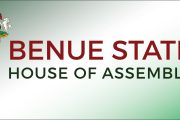As massively circulated and highly consumed in the highest level of global power as Robert Kaplan’s The Coming Anarchy, so also was the condemnation. Those who took him to the cleaners argue that the text is a product of interested visualization aimed at providing justification for the kind of securitisation of immigrants going on in the world today. His critics would say he and his fellow travelers are implicated in the current framing of migrants, asylum seekers and sundry irregular travelers from Africa as criminals and terrorists. The criticism follow the broad contention that anarchy is what anarchists make of it rather than truth out there that a sensitive, intelligent or resourceful researcher can discover factually. They would say that such is why Kaplan omitted history, (colonialism) from his narrative of the violent turn in West Africa.

 I do not know what the critics would tag on Prof Sylvester Odion-Akhaine’s booklet of near namesake to Kaplan’s book. Can a Nigerian be charged with being involved in geo-cultural mapping of Nigeria as Kaplan was charged with geo-cultural mapping of West Africa in his anarchy narrative?
I do not know what the critics would tag on Prof Sylvester Odion-Akhaine’s booklet of near namesake to Kaplan’s book. Can a Nigerian be charged with being involved in geo-cultural mapping of Nigeria as Kaplan was charged with geo-cultural mapping of West Africa in his anarchy narrative?
Other than this question, Akhaine’s booklet is worth revisiting at a time such as this. It follows the popular culture route that all such hair-raising texts in the post Cold War – from Fukuyama to Huntington to Barnett and Edward Said’s response to Huntington travelled. When Thomas Barnett wrote the article that is now the book called The Pentagon’s New Map, it was in Esquire, a platform of popular culture he first published it. The reason critics give for that is the responsibility of justifying the then invasion of Iraq in popular consciousness by intellectuals of statecraft like himself.
The quality of delivery in Akhaine’s book is no less compulsive and the empirics strong. There is also a clear argument: the trouble with Nigeria is “a backward and warped ruling class”, (p. viii) which has stolen $400b from late 1950s to 2007, transforming the country into an “earthly battlefield” according to Patrick Wilmot in 2006 and projected to be a country “worse than Armageddon” by 2036 when there will be no oil. Most readers would find his harsh illustration of this claim with the Obasanjo regime either interesting or disagreeable, depending on where the reader stands.
In 21 chapters, some of it very short, hair-raising but memorable, language escorts the reader towards the apocalypse invoked at every turn. Such phrases would include the caveat early in the ‘Preface’ that he did not set out to write a Nigerian version of the rise and fall of the Roman Empire but merely innovatively winnowing the Nigerian harvest; the reference to “the pallid look of death”, (p. vi); the inference that Nigeria dramatises the entire elements of the reality Kaplan imagined in his The Coming Anarchy which was exemplified with West Africa. Add to this samplers the imageries of “precarious equilibrium” or asymmetrical warfare and you would understand the repeated reference to Nigeria as a strong joke.

The author
It makes this booklet a must read for whoever might emerge the next unifier of what passes for the ruling class in Nigeria or a text for whoever emerges the leader of the democratic alternative rescue forces. It is not a doctrinaire text but contains nuggets to look at by any group or agency that gets onto the task of reworking Nigeria from crisis.
As a text, it is incapable of a single meaning. Various readers would produce different sense of it but no readers will not be pricked by the ugly trajectory the mirror is holding before him or her. Nigeria as an anarchy can no longer be denied, from the utter fragmentation of the elite to the traffic chaos in major cities to the collapse of infrastructure, education, health, public transport, from the mistrust to the fear and stereotyping and, of course, the diverse forms of violence on display – domestic violence/suicide, rape, terrorism, banditry. The worst of all must be the collapse of ideas.
The collapse of ideas is the only plausible reason why this booklet has not been a subject of controversy in Nigeria. Otherwise, The Next Anarchy is inviting although two of its fears have failed to materialize. The first of this was the scenario that global powers had occupation of Niger Delta on their geopolitical list. Even if they did, all the global powers are now net oil exporters except one or two. Technology has compensated their initial lack of oil resources and which draws our attention to the diffuseness of reality. The second was the fear of what happens should late President Umaru Yar’Adua die. He died but the power elite managed to process a succession without a whiff, deploying the discourse of ‘the child of necessity’.
The above two examples notwithstanding, there are still so many things that a typical reader may value in the booklet as to warrant a cover2cover reading or re-reading (in the case of those who might have read it before). That does not remove scratching our head on whether Prof Akhaine is guilty or not guilty of writing Nigeria in the same manner that Kaplan has been charged with writing West Africa. The charge comes from the perspective that intellectuals or academics, if you like, are not just doing their job. They are also implicated in the reality they describe, theorise or represent because all these are discursive practices with performative consequences.
Lastly, The Next Anarchy proves again that meaning changes. Reading it today is unlikely to be like reading it in 2008 when it was first published.




























